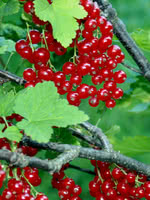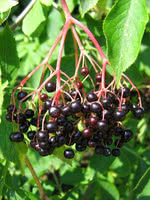Mon-Fri 9am - 5pm Mountain time
Northern Red Currant vs Black Elderberry
Ribes triste
Sambucus canadensis
NOT AVAILABLE THIS SEASON - MIGHT RETURN
NOT AVAILABLE THIS SEASON - MIGHT RETURN
The Northern Red Currant is also known as the Swamp Red currant due to its preference for moist soil. As long as the soil is wet, this shrub can live in any degree of sunlight.
The currant itself is a bright red-purple berry enjoyed by many animals and some people for its sour flavour, similar to garden red currants. The flowers of this shrub are tiny and red or greenish-purple.
Black Elderberry is a deciduous shrub native to eastern North America. You can plant this shrub in moist areas and it will help stabilize your soil. You can also use it on rural properties anywhere you'd use a lilac.
Black Elderberries are considered to be partially self-pollinating. So while they will still produce some berries without cross-pollination, planting with another variety will increase yields. Consider planting with Ranch Elderberry or Bob Gordon Elderberry.
Warning: the seeds, stems, leaves, roots, and uncooked berries of the Black Elderberry are poisonous to humans when eaten in quantity. You should cook the berries to make them safe for human consumption.
Northern Red Currant Quick Facts
Black Elderberry Quick Facts
Toxicity: leaves, stems, and uncooked berries are poisonous to humans

